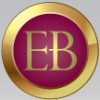bridlemakers.com
The bridle consists of the
following elements:
- Crownpiece: The crownpiece, headstall
(US) or headpiece (UK) goes over the horse's head just behind the
animal's ears, at the poll. It is the main strap that
holds the remaining parts of the bridle in place.
- Cheekpieces: On most bridles, two
cheekpieces attach to
either side of the crownpiece and run down the side of the horse's
face, along the cheekbone and attach to the bit rings.
On some designs, the crownpiece is a longer strap that includes the
right cheek and crownpiece as a single unit and only a left side
cheekpiece is added.
- Throatlatch: the throatlatch (US) or
throatlash (UK) is
usually part of the same piece of leather as the crownpiece. It runs
from the horse's right ear, under the horse's
throatlatch,
and attaches below the left ear. The main purpose of the throatlatch is
to prevent the bridle from coming off over the horse's head, which can
occur if the horse rubs its head on an object, or if the bit is low in
the horse's mouth and tightened reins raise it up, loosening the cheeks.
- Browband: The crownpiece runs through
the browband. The
browband runs from just under one ear of the horse, across the
forehead, to just under the other ear. It prevents the bridle from
sliding behind the poll onto the upper neck, and holds multiple
headstalls together when a cavesson or second bit is added, and holds
the throatlatch in place on designs where it is a separate strap. In
certain sports, such as dressage and Saddle seat, decorative browbands are
sometimes fashionable.
-
- Noseband: the noseband
encircles the nose of the horse. It is often used to keep the animal's
mouth closed, or to attach other pieces or equipment, such as martingales. See also Noseband.
- Cavesson is a specific type of noseband used on English
bridles wherein the noseband is attached to its own headstall, held
onto the rest of the bridle by the browband. Because it has a separate
headstall (also called sliphead), a cavesson can be adjusted with
greater precision; a noseband that is simply attached to the same
cheekpieces that hold the bit cannot be raised or lowered. In Saddle seat
riding, the cavesson is often brightly colored and matches the
browband. Variations on the standard English-style bridle are often
named for their style of noseband. For use in polo, a gag bridle usually has a noseband plus a
cavesson.
- Frentera, a strap running from the
browband to the noseband, primarily seen on bridles of certain South American designs.
- Reins: The reins of a bridle attach to the bit,
below the attachment for the cheekpieces. The reins are the rider's
link to the horse, and are seen on every bridle. Reins are often laced,
braided, have stops, or are made of rubber or some other tacky material
to provide extra grip.
- Bit: The bit goes into the horse's mouth,
resting on the sensitive interdental space between the horse's teeth known as the "bars."
- On a double bridle, where the horse carries two
bits (a curb and small snaffle, often called a "bit
and bradoon"),
a second, smaller headstall, known as a 'bradoon hanger' or ‘slip
head’is used to attach the bradoon.
- A
second set of reins is attached to the bradoon, and hence the rider
carries four reins.
- The
bridle, depending on style, may also contain some of the following
elements:
- Bit guards: Bit guards are optional fittings used on
some bits.
- Curb strap or curb chain, used primarily on bridles
with a curb bit,
a small strap or chain, usually flat, that runs from one side of the
bit to the other, and puts pressure on the chin groove when curb reins
are tightened.
- Lip strap: a small strap used on a few
curb bit designs, attaches between the bit shanks
of a curb bit at the halfway point, used to keep the curb chain
properly positioned and may prevent the horse from grabbing at the
shanks with its lips.
- bit hobble: basically, a curb strap used
on the snaffle bit
rings of a western bridle. Provides no leverage, but because open-faced
bridles have no cavesson to prevent the horse from gaping its mouth
open, it prevents the bit rings from being pulled through the
mouth if strong pressure is applied.
- shank hobble: A strap, bar or chain that
connects the shanks of a curb bit at the bottom of the bit. Serves to
stabilize the bit, prevent a lasso or other object from being
caught on the shanks.
- Winkers or Blinkers, also called "blinders," are
partial eye blocks used primarily on driving horses and some race
horses that
prevent the animal from seeing what is behind it.
- Overcheck, also called a bearing rein
or "check rein," is a specialty rein that runs from a snaffle bit, past
the crownpiece, along the crest of the neck, and attaches to the front
of a harness
on a driving horse. It prevents the horse from dropping its head too
low. Overchecks are also sometimes used on riding horses, especially
ponies, to keep them from grazing while being ridden by a small child
who may lack the physical strength or skill to raise the animal's head
up.

Copyright
© 2024 Teddybuoy LLP
